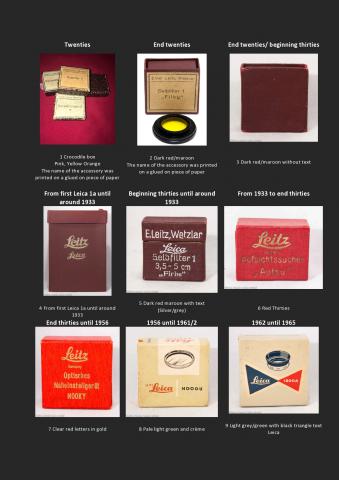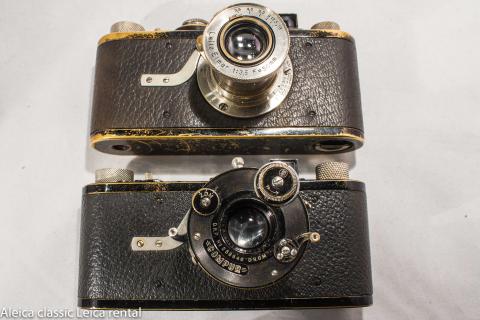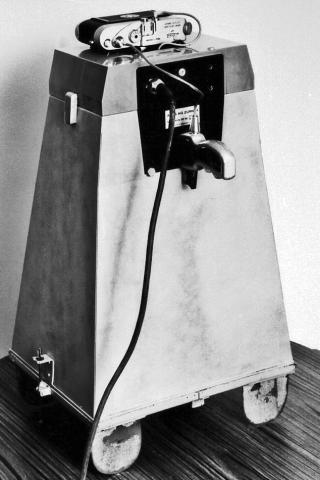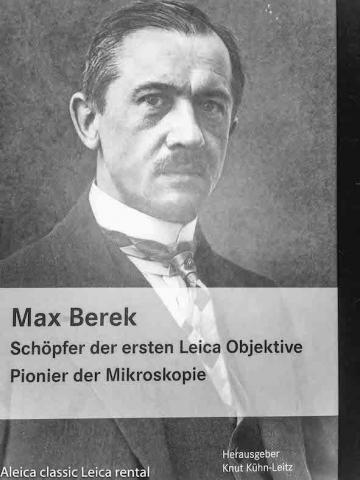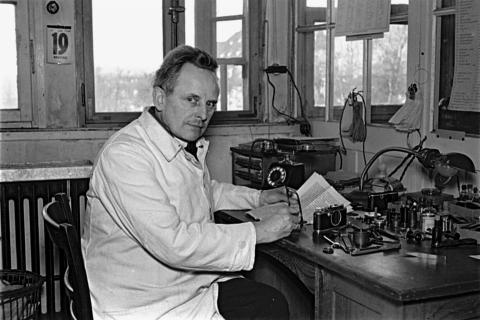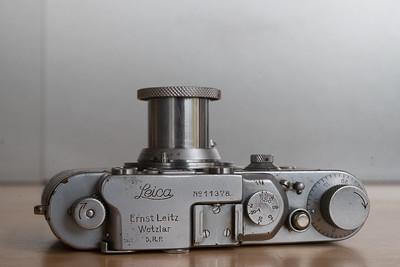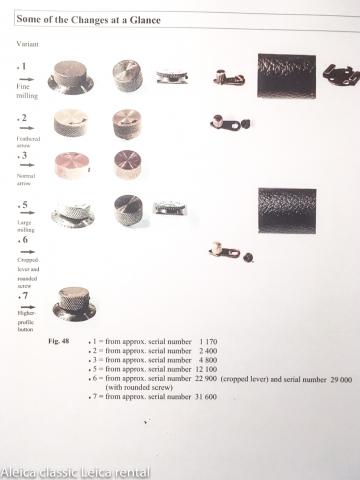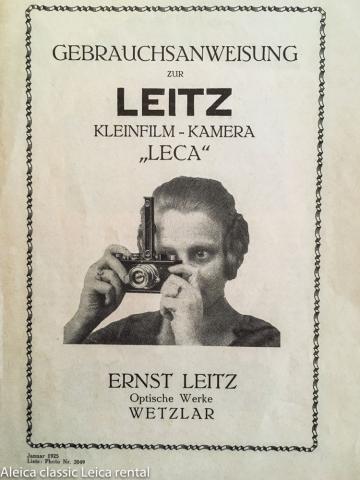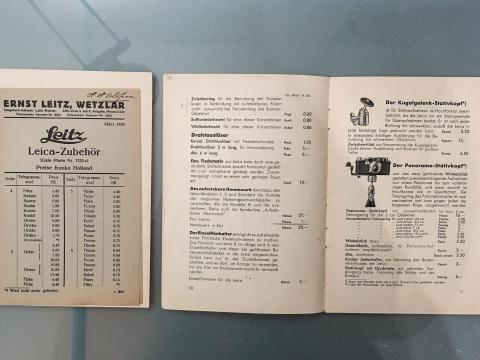News & Leica facts
Leica fact 24: Leica boxes may be used to determine the age of an accessory.
Leica collectors often have difficulty in determining the age of an accessory. It is easy to find websites with serial numbers and production years for Leica cameras and lenses. With that information it is quite easy to determine the production year of cameras and lenses.
This is different for accessories. Firstly most accessories don’t have a serial number, and if they have one, no public sources are available to find a production year for these serial numbers.
Secondly many accessories have been in production unchanged during 20 of more years. Much longer than most cameras… Read more >>
Leica fact 23: Leica Literature
Many books have been written with the Leica as subject. One can easily fill a small library with them.
Yearly Leitz catalogues
First of all Leitz made their Yearly catalogues almost from the beginning. These catalogues contained a description of all products available. Many of these products were introduced with a picture so it can be easily seen what the product looked like. All products had their own Leica code (Leica Fact 2). There were catalogues in different languages and with or without sales prices. Often an inlay sheet with the prices was available.… Read more >>
Leica fact 22: The Leica Ib or Compur Leica
The Leica Ib is the only Leica camera with a Compur ‘between the lens shutter’, or Leaf shutter instead of the usual Focal plane shutter.
The Leica Ib was introduced in 1926, so one year after the Leica Ia. The camera had the normal Elmar 5cm 3.5 optics, but in this lens a Compur shutter was incorporated. The Leica 1B was made in two versions: the dial set type and the ring set type. 638 dial set types were manufactured until 1929. And 1072 ring set types from 1928 until 1941. Probably the last actual production runs stopped in 1932. And some 20 ring set types were assembled from… Read more >>
Leica fact 21: the Leica Post cameras
The Leica Post is a perfect example of the durability and reliability of the Leica cameras. As some of you know the Leica Post is used by several Post organisations to register the telephone meter readings.
The camera
The Post camera is a special Leica 1c, 1f, 1g, MD, MD2, MDa, MDa 24x 27 mm. Also some 8 M6 and M4.2 cameras were adjusted for Post purposes. Apart from the M6 and M4.2 all these cameras lack a viewfinder as they were used for scientific purposes with bellows.
The Post camera differs from the standard 1c, 1f etc. cameras in the following… Read more >>
Leica fact 20: Max Berek the lens designer of Leitz
Oskar Barnack gets the credits for the design of the Leica camera. But the Leica wouldn’t have had such a good receipt by the market if the sharpness of the lens wasn’t that well as it was. The image quality was a combination of the fine grain of the cine film and the superb qualities of the lens.
The creator of the first Leica lenses was Max Berek, born in 1886 in Ratibor in Silesia (Nowadays Racibórz in Poland).
He came from a humble background; his father was a mill worker. This background probably was the reason of his later social commitment. He was the only child in… Read more >>
Leica fact 19: Oskar Barnack The Force behind Leica cameras
Ernst Leitz was the man who decided to take the Leica camera into production. That was a very important and bold decision in economically challenging times.
But he couldn’t have taken this decision if Oskar Barnack hadn’t developed such an innovating camera as he did.
He developed the camera on his own account.
Oskar was born on the first of November 1879 in Linow close to Berlin. At the age of three he and his family moved to Berlin. He came from a humble background. In 1908 he started to work in Jena at the microscope development department of Zeiss. There he met… Read more >>
Leica fact 18: This is why Leica serial numbers may be confusing in determining the camera model.
On a regular basis I see ads on eBay where a Leica II is offered as being a Leica 1a. If you study the serial number then you would see that it is a 1a. How did that happen?
If you would send your Leica camera to the Leitz factories for maintenance or repair, in the thirties, you would automatically get some new features.
Already from the introduction of the Leica II in 1932 it was possible to have the earlier models to a camera with interchangeable lenses and a build in rangefinder (Emmermann page 171 Jahrgang 1 March-April 1932).
The serial number… Read more >>
Leica fact 17: Leica 1A variants with the Elmar lens
After the introduction of the Leica 1 with the ELMAR lens in October 1925 Leitz as changed the camera in a number of details.
Three major variants
1 As of 1930 customers could choose between the ELMAR 3.5 5 cm lens and the faster HEKTOR 2.5 5cm lens. Leitz supplied some 1130 Leica 1A with this fixed HEKTOR lens. All of these cameras were of the latest type.
2 Apart from the cameras with the lenses in meter, also lenses in feet have been delivered. Until approx., serial number 2400 the “feet” ELMARS the shortest focus distance was 3,5 feet.… Read more >>
Leica fact 16: The Leica 1A part 1: the first 1000 cameras
The Leica 1A was the first camera that came out of the Leitz factory in 1925. In June 21924 Ernst Leitz II decided to actually produce the Leica 1. As of that moment the production of parts started and the marketing departments prepared for the market introduction of the Leica 1.
The original name of the camera was LECA (illustration 1). However the existence of a French camera brand name L’eca prevented this. Also the name Barnack has been considered, but the name was skipped, as this was to German a name. Leaflets have been designed with these names. In the end Leitz decided to… Read more >>
Leica fact 15: Leica accessories in the thirties
The other day I was browsing through my Leica documentation. I have 4 issues of the Leica Zubehör catalogue (Accessories) being: November 1935, without prices, July 1937 with printed prices in Reichsmark, August 1937 with a separate insert with prices in Dutch guilders and one of April 1939 without prices. Image 1
Leitz issued separate catalogues for lenses, viewfinders, close up accessories, projection reproduction and enlargement equipment and more.
What is it that you can find in these catalogues?
Leica film cassettes, lens caps, dioptre correction glasses, filters… Read more >>
